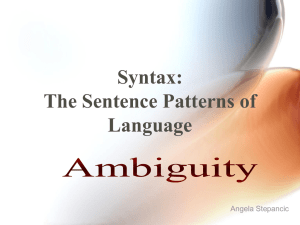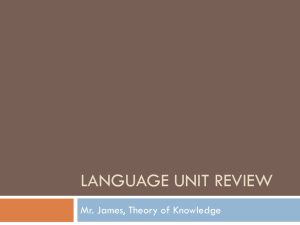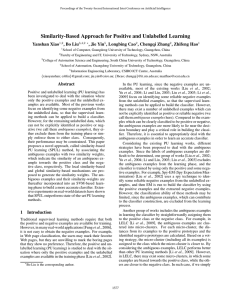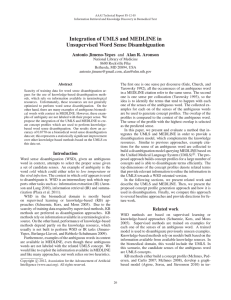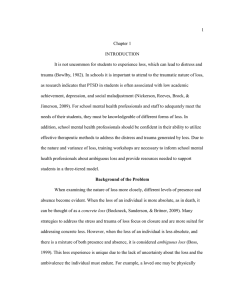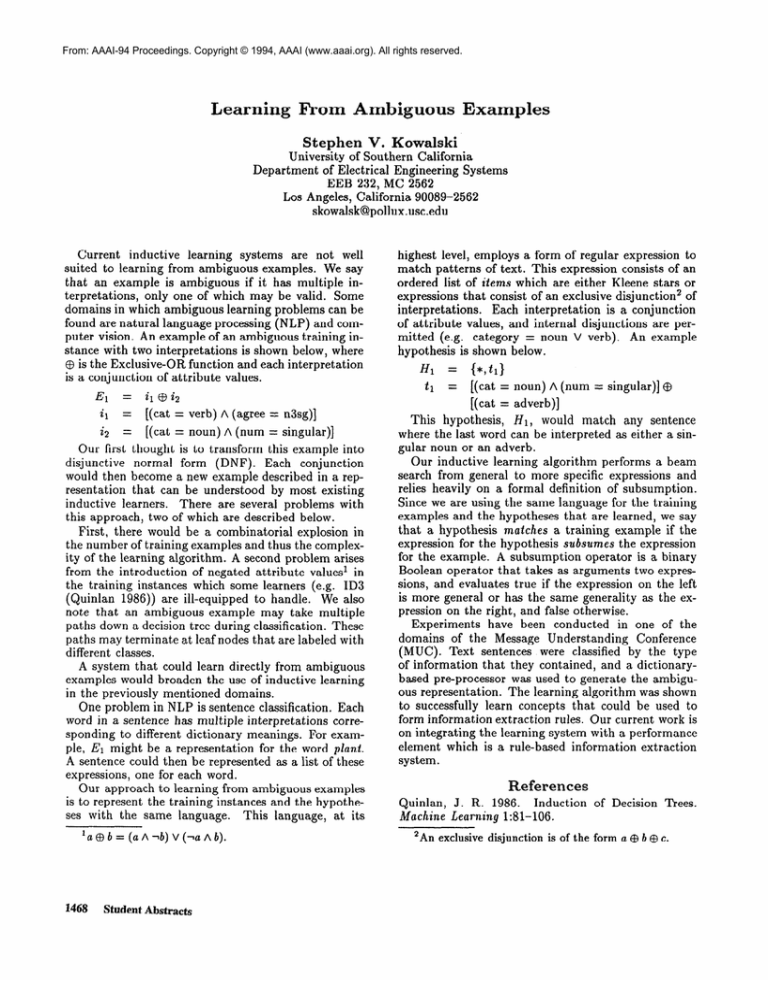
From: AAAI-94 Proceedings. Copyright © 1994, AAAI (www.aaai.org). All rights reserved.
Learning From Ambiguous
Stephen
Examples
V. Kowalski
University of Southern California
Department of Electrical Engineering Systems
EEB 232, MC 2562
Los Angeles, California 90089-2562
skowalsk@pollux.usc.edu
Current inductive learning systems are not well
suited to learning from ambiguous examples. We say
that an example is ambiguous if it has multiple interpretations, only one of which may be valid. Some
domains in which ambiguous learning problems can be
found are natural language processing (NLP) and computer vision. An example of an ambiguous training instance with two interpretations is shown below, where
@ is the Exclusive-OR function and each interpretation
is a conjunction of attribute values.
El
=
il a3 i2
il
=
[(cat = verb) A (agree = n3sg)]
i2 = [(cat = noun) A (num = singular)]
Our first thought is to transform this example into
disjunctive normal form (DNF). Each conjunction
would then become a new example described in a representation that can be understood by most existing
inductive learners. There are several problems with
this approach, two of which are described below.
First, there would be a combinatorial explosion in
the number of training examples and thus the complexity of the learning algorithm. A second problem arises
from the introduction of negated attribute values1 in
the training instances which some learners (e.g. ID3
(Quinlan 1986)) are ill-equipped to handle. We also
note that an ambiguous example may take multiple
paths down a decision tree during classification. These
paths may terminate at leaf nodes that are labeled with
different classes.
A system that could learn directly from ambiguous
examples would broaden the use of inductive learning
in the previously mentioned domains.
One problem in NLP is sentence classification. Each
word in a sentence has multiple interpretations corresponding to different dictionary meanings. For example, El might be a representation for the word plant.
A sentence could then be represented as a list of these
expressions, one for each word.
Our approach to learning from ambiguous examples
is to represent the training instances and the hypotheses with the same language. This language, at its
‘a@b=
1468
(a A lb) v (-a A b).
Student Abstracts
highest level, employs a form of regular expression to
match patterns of text. This expression consists of an
ordered list of items which are either Kleene stars or
expressions that consist of an exclusive disjunction2 of
interpretations. Each interpretation is a conjunction
of attribute values, and internal disjunctions are permitted (e.g. category = noun V verb). An example
hypothesis is shown below.
HI
=
{*A)
t1
=
[(cat = noun) A (num = singular)J @
[(cat = adverb)]
This hypothesis, HI, would match any sentence
where the last word can be interpreted as either a singular noun or an adverb.
Our inductive learning algorithm performs a beam
search from general to more specific expressions and
relies heavily on a formal definition of subsumption.
Since we are using the same language for the training
examples and the hypotheses that are learned, we say
that a hypothesis matches a training example if the
expression for the hypothesis subsumes the expression
for the example. A subsumption operator is a binary
Boolean operator that takes as arguments two expressions, and evaluates true if the expression on the left
is more general or has the same generality as the expression on the right, and false otherwise.
Experiments have been conducted in one of the
domains of the Message Understanding Conference
(MUC). Text sentences were classified by the type
of information that they contained, and a dictionarybased pre-processor was used to generate the ambiguous representation. The learning algorithm was shown
to successfully learn concepts that could be used to
form information extraction rules. Our current work is
on integrating the learning system with a performance
element which is a rule-based information extraction
system.
References
Quinlan, J. R. 1986. Induction
Machine Learning 1:81-106.
of Decision Trees.
2An exclusive disjunction is of the form a $ b @ c.


